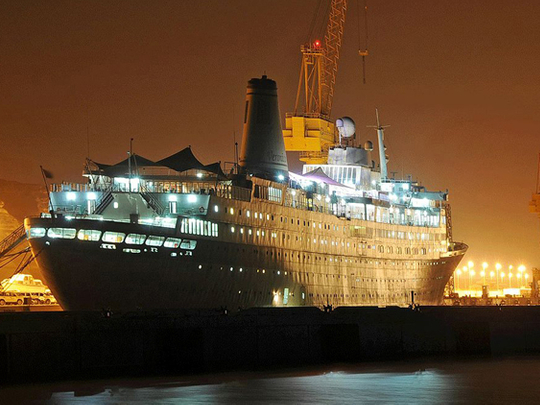
Muscat: Once a small almost deserted village, about 560 km from Muscat in Oman’s central Al Wusta region, Duqm is fast developing into an important hub where the government envisions big-time foreign investments.
The authorities have already spent 1.750 billion Omani riyals (Dh16.64 billion) to raise infrastructure at the Special Economic Zone Authority of Duqm (Sezad).
“We are expecting investments for the refineries and petrochemicals projects at Duqm,” Yahya Bin Saeed Al Jabri, Sezad chairman, said in a statement released to media in the build-up to Oman’s Renaissance Day on July 23.
Al Jabri affirmed that the Sezad, alongside the other companies operating in Duqm, were aiming to make the port town one of the biggest free economic zones in the Middle East.
With its 80-kilometre coastline and strategic location, Duqm is seen by many as an ideal option for those looking to avoid the Strait of Hormuz and the Arabian Gulf, the world’s greatest energy transit point.
Oman is keen to explore this option and use Duqm as an export hub to make Oman’s economy less oil-reliant.
Geographically, Duqm’s location is ideal for the ships plying from Asia to Europe as they pass close to Oman’s coast en route to the Suez Canal.
The proposed Oman Rail Project, pipelines and new roads are expected to give the sultanate a perfect link with Saudi Arabia, the UAE and other countries.
“We want to turn our aspirations into reality and make the area [Duqm] one of the main sources for public revenues and a major contributor to diversifying sources of the national economy and generating job opportunities,” Al Jabri said in the statement emailed to media.
“The government investment in the area will gradually increase with the implementation of many other projects as per the phases of development for the area,” he said, adding that the development work was expected to continue until 2020.
He said that the field is now open for more investments by local and foreign investors and urged the private sector to also launch tourism-related projects.
Already Oman’s first floating hotel — Veronica Duqm — is proving to be a major attraction for both foreign and domestic tourists.
Al Jabri further said that consultancy work for the detailed design of an oil refinery is in progress. As per the period for the project, actual work on the refinery is expected to start in 2015 and it is expected to be ready by 2018. He pointed out that the project aims at enhancing the sultanate’s status in the field of petrochemical industries and create more job opportunities for Omanis.
In addition to the economic benefits that will be generated by the special zone, he said the aim is also to ensure regional development for the central region with Duqm serving as a hub for many economic activities.
He said the overall development of Duqm is also meant to generate jobs. Sezad estimates that about 45,000 jobs will be created for Omanis, out which 15,000 will be direct employment while the other 30,000 will be indirect job opportunities created through activities at the economic zone.
The authority is now focusing on preparing the industrial area to receive small, medium and heavy industries by providing the required infrastructure and other industry-related services, Al Jabri said. “The population is expected to reach 70,000 in the coming years. This will create a need for many light industries, such as carpentry, ironmonger, auto-repair and aluminium workshops,” he said.
The Duqm Port and Drydock are integral to Oman’s plans to develop the central region town and capitalise on Duqm’s proximity to international and regional sea lanes to attract all manner of ships that for maintenance, repair and dry docking services.
The port of Duqm is conceptualised to provide onshore handling and logistics support for ships at the upcoming industrial zone. The infrastructure provided by the company managing the port measures up to the highest standards. Commercial operations at the port began last March.
The port’s 9.6-km breakwater and a 2.25-km commercial berth for project cargo, bulk and containers has been completed and a roughly 1-km-long quay wall for government vessels is nearing completion. A water depth of 19 metres in the approach channel and 18 metres in the commercial berths allows safe reception and handling of ships with capacities of up to 150,000 DWT.
The dry dock, built at a cost of $1.5 billion (Dh5.50 billion), has already been operational for over a year.
The once sleepy town is indeed turning out to be a strategic port in the central region with the government confident of both economic benefits and employment generation for Omanis.












